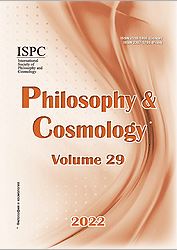The Visualisation of Cosmological Ideas in Contemporary Architecture
The Visualisation of Cosmological Ideas in Contemporary Architecture
Author(s): Iryna Maslikova, Svitlana StoianSubject(s): Architecture, Aesthetics
Published by: Международное философско-космологическое общество
Keywords: contemporary architecture; cosmological theories; wave-like aesthetics; deconstructivism; symbolism; harmony; innovation;
Summary/Abstract: This article examines the influence of cosmological concepts on the formation of the new aesthetics of contemporary architecture. Architecture, since ancient times, has been a visualisation of man’s ideas about the structure of the cosmos. Processes of radical departure from the classical principles of architectural space have intensified since the early 20th century. This has led to an increased interest in nature and the active use of natural forms. These principles were embodied in the architectural experiments of Antoni Gaudi, the progenitor of ecological architecture, Friedensreich Hundertwasser, and in the practices of the representatives of the Bauhaus. The beginning of space exploration made the art world increasingly interested in scientific developments in the field of space. This has resulted in radical transformations in architecture, strongly influenced by the latest ideas about the universe’s structure, and has directly influenced the nature of architectural forms. Architects such as Peter Eisenman, Daniel Libeskind, Rem Koolhaas, Bernard Tschumi, Zaha Hadid, and Frank Gehry have initiated a new cosmocentric architecture that uses wave-like aesthetics to visualise the rhythms of cosmic harmony and the aesthetics of transitions to states of instability and transitions occurring in the dynamic process of the universe as necessary components of an ever-changing and transforming system. At the same time, the authors argue that contemporary architecture does not completely detach itself from the traditions of the past, but actively uses the symbolism of ancient cosmological doctrines to create modern innovative spaces, emphasising the continuous connection between different stages of human culture.
Journal: Philosophy and Cosmology
- Issue Year: 29/2022
- Issue No: 29
- Page Range: 26-39
- Page Count: 14
- Language: English

